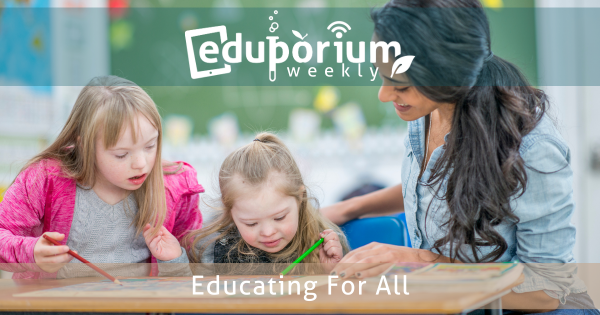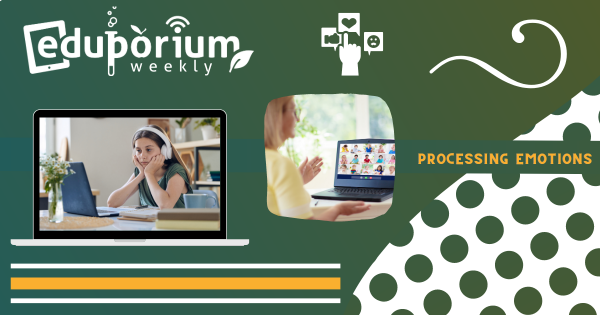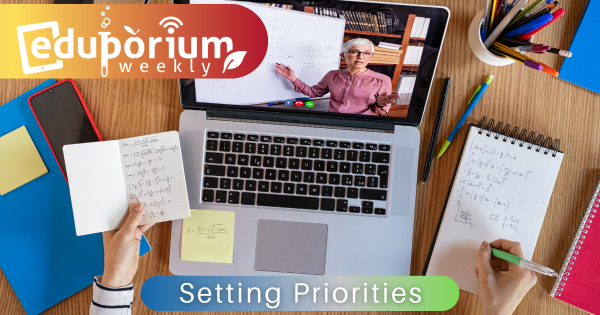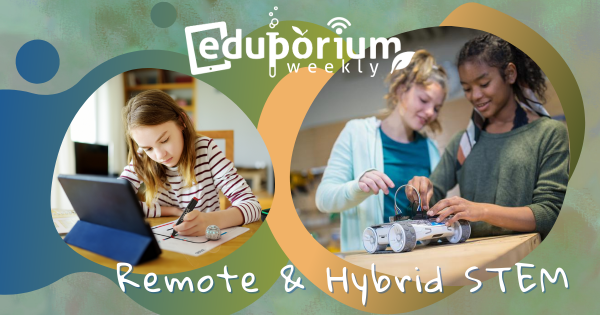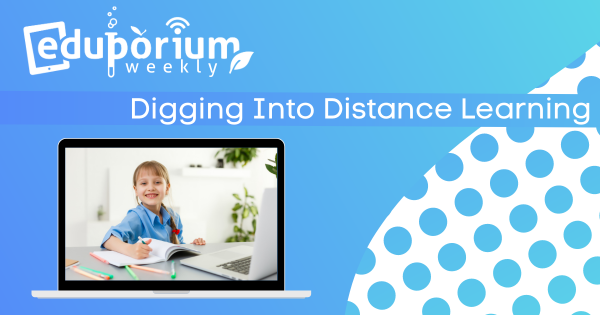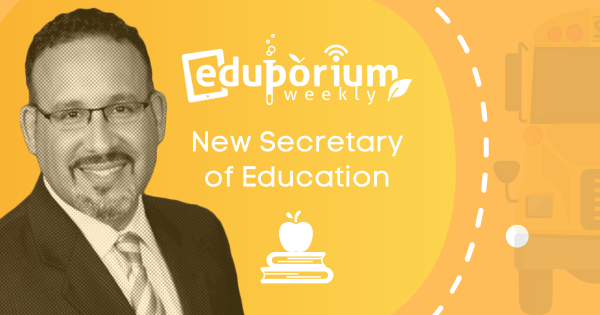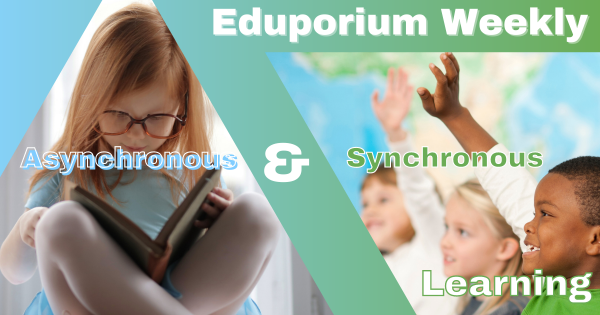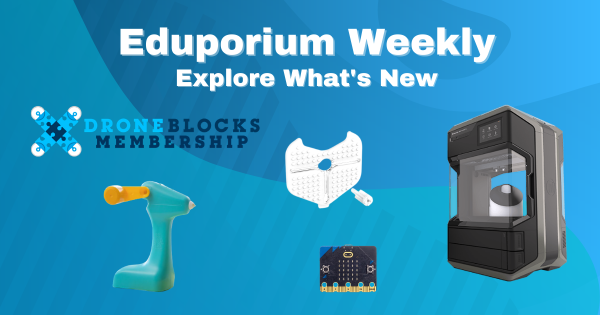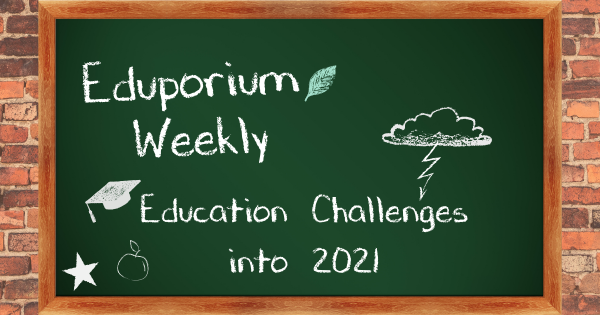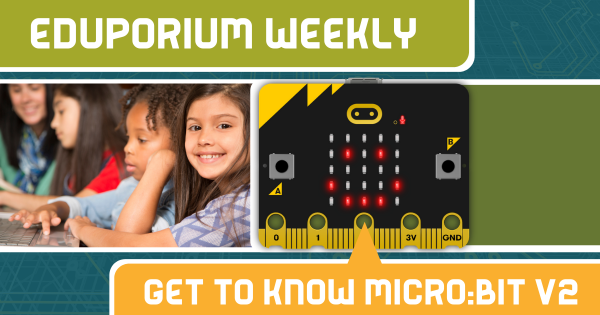It’s been widely documented how difficult it’s been for special education students and teachers in distance learning. Though we’re a year into this new form of education, teachers are still learning about how to best work with special education students from afar. And, this week, that’s our topic for exploration.
Eduporium Weekly
Our longest running current blog series, the Eduporium Weekly is your source for relevant education topics. Whether it's related to EdTech, STEM, SEL, makerspaces, soft skills, equity, CTE, or any number of other things, you are sure to find some relevant content here. Our team remains committed to providing intriguing and up-to-date opinions and perspectives on the most important topics—whether they're technology-based or not. Every week, we share our thoughts about those key topics in education. Giving educators a Saturday morning read, many of our Eduporium Weekly posts reflect recent happenings, important updates, or, sometimes, some fun revelations. We're also very fortunate to serve a community of such committed educators. For that reason, we strive to keep our thoughts and content fresh. And, this section of our blog is a great place to go for just that.
Whatever is happening in education, we believe our committed team members help educators adjust. As we've seen, technology has a place in all types of learning—as long as educators integrate it strategically. As debates and discussions in STEAM and general education evolve, we adapt this content to continually educate, inform, and entertain. Our perspective may be a bit unique but our collective expertise on these topics is always improving. We also encourage you to browse the pages or search for a topic of your interest on the left of your screen. We certainly take pride in being up to date with what teachers are experiencing. From our entire team, we hope this content truly provides you with guidance and inspiration. Check back every weekend, as well, for the latest edition of the Eduporium Weekly.
-
Eduporium Weekly | Supporting SEL Remotely
MakerEd tools allow students to connect their heads to their hearts using their hands. And, up until a year ago, so much good was being done in the classroom to advance social and emotional stability in students by using technology in creative ways. Now, however, there are all new reasons to focus on SEL in remote learning. -
Eduporium Weekly | STEM in Remote and Hybrid Education
While not impossible, planning for STEM in remote or hybrid learning does present obstacles for educators, including finding the time to fit it into class meetings, creating lesson plans, and getting materials to students. Online STEM platforms have provided one solution, but, in order to replicate that classroom experience, it can become tricky. -
Eduporium Weekly | Different Types of Distance Learning
As education continues to be delivered at least partly outside of the classroom, different types of distance learning continue to be explored. So, whether you’re teaching fully remotely, in a hybrid model, live with students all the time, or trying out asynchronous learning, we’ll share some suggestions for how it could be improved. -
Eduporium Weekly | Education Secretary, Miguel Cardona
As many throughout the education world have reacted and processed the events of the last couple of months, it’s left us with a refresh at the top of our institution of education. Next week, a new administration will begin serving and this includes a new Education Secretary, Miguel Cardona, replacing Besty DeVos. Here is some of what we know so -
Eduporium Weekly | Remote Ed: Synchronous or Asynchronous?
Synchronous and asynchronous learning have each become important topics throughout various education communities and the subtle features of each are valuable for today’s educators to know. If you’re moving back and forth about which method to use or find yourself switching regularly, read on to learn more. -
Eduporium Weekly | 5 New STEM And EdTech Tools On Our Store
Our one-stop shopping experience is a favorite among K-12 tech teachers and specialists and our Educator Discount on technology and quoting help make it easier to obtain STEM tools from various manufacturers and STEM disciplines in one place. So, what’s among the newest offerings we’re able to provide for students involved in remote, hybrid, or in-person learning? -
Eduporium Weekly | Challenges Around Education In 2021
Many of the insights we’ve gained about education amid the pandemic are lessons most of us wouldn’t have thought we would need to learn but they have become very valuable. Now, educational leaders are dealing with the prospect of carrying over these insights as they create meaningful student experiences while also trying to apply new knowledge going forward. -
Eduporium Weekly | Get To Know The micro:bit V2
In terms of its looks, the micro:bit V2 is very similar to the original micro:bit and even costs roughly the same as well. It has tons of added capabilities, however, and can bring exciting new wrinkles to coding education with the addition of a built-in speaker, a built-in microphone, and a redesigned LED matrix for creating programs. Keep reading to




